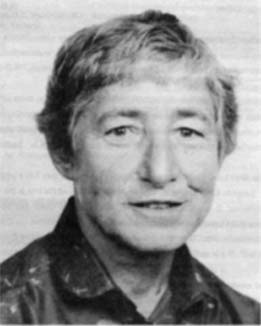


 تاريخ الرياضيات
تاريخ الرياضيات
 الرياضيات في الحضارات المختلفة
الرياضيات في الحضارات المختلفة 
 الرياضيات المتقطعة
الرياضيات المتقطعة
 الجبر
الجبر
 الهندسة
الهندسة 
 المعادلات التفاضلية و التكاملية
المعادلات التفاضلية و التكاملية 
 التحليل
التحليل
 علماء الرياضيات
علماء الرياضيات |
Read More
Date: 22-1-2018
Date: 17-2-2018
Date: 8-2-2018
|
Died: 17 April 2006 in Dunedin, New Zealand

Gloria Olive completed her school educations at Abraham Lincoln High School in Brooklyn, New York, graduating in 1940. She then entered Brooklyn College in New York where she studied mathematics, graduating with an B.A. in 1944. Perhaps the most famous of her lecturers was Jesse Douglas who had been awarded the Fields Medal at the International Congress of Mathematicians at Oslo in 1936. After graduating, Olive was appointed as a Graduate Assistant at the University of Wisconsin where she spent the two academic years 1944-46. In addition to teaching she studied for her Master's Degree during these two years and was awarded the degree in 1946. She had taken courses at Wisconsin from R H Bruck, H P Evans, R E Langer, and C C MacDuffee.
From Wisconsin, Olive moved to the University of Arizona in 1946 where she was appointed as an instructor. After two years she was appointed to Idaho State University where again she spent two years teaching as an instructor. Her next appointment in Oregon State University in 1950 was as a Graduate Assistant and after this one-year post she left the academic world for a short time, taking a job as a cryptographer in the U.S. Department of Defense in Washington, D.C. After a year in Washington, Olive returned to an academic position being appointed to Anderson College in 1952.
Anderson Bible Training School had been founded in 1917 as an educational establishment to train leaders and workers for a life in the church. It rapidly developed a broader, more general, education program, and changed its name first to Anderson College and Theological Seminary, and then to Anderson College. At Anderson College, Olive built up the mathematics department and began to become interested in mathematical research, in particular studying generalised powers. C C MacDuffee, who had taught Olive at the University of Wisconsin, agreed to accept a visiting professorship at Oregon State University so that he could supervise her doctoral thesis. Sadly he died in 1961 and Olive was left without a thesis advisor. However she was awarded a Ph.D. for her thesis Generalized Powers in 1963.
Olive continued to at Anderson College until 1968 when she accepted a professorship at the University of Wisconsin-Superior. She left the mathematics department in Anderson College, of which she had been the chair, with three members of staff who were her former students. The educational establishment she joined had been accredited as Superior Normal School in 1916, then ten years later became Superior State Teachers College. By 1951 it had changed its name to Wisconsin State College-Superior, and then in 1964 it became a university, although at this stage it was not part of the University of Wisconsin. Olive stayed at the University of Wisconsin-Superior until 1972, the year after it joined the University of Wisconsin, and went to New Zealand where she was appointed as a senior lecturer at the University of Otago. She continued in this post until she retired in 1989. Mac Lane and Rayner wrote on her retirement [1]:-
For all of her time with the Mathematics and Statistics Department of Otago University, Gloria has been the only female on the staff with tenure, and as such has been a shining example to both staff and students. She has fought hard for the issues she championed, and contributed to several worthwhile changes (such as the current internal assessment policy applauded by both staff and students). Her colleagues will miss her lively contributions to the debates in departmental meetings.
Much of Olive's research was on applications of generalised powers. She published papers such as Binomial functions and combinatorial mathematics (1979), A combinatorial approach to generalized powers (1980), Binomial functions with the Stirling property (1981), Some functions that count (1983), Taylor series revisited (1984), Catalan numbers revisited (1985), A special class of infinite matrices (1987), and The ballot problem revisited (1988). Mac Lane and Rayner write [1]:-
Some of her work on binomial functions overlaps that of Gian-Carlo Rota's "polynomials of binomial type". She has had a special interest in the polynomials which are generated by her generalised powers, and hopes that someone will prove or disprove her conjecture, now about 30 years old, that all their zeros lie on the unit circle. This conjecture has now been verified for infinitely many special cases.
During her years in New Zealand, she served on the Council of the New Zealand Mathematical Society and was the convener of the New Zealand National Committee for Mathematics.
Articles:



|
|
|
|
علامات بسيطة في جسدك قد تنذر بمرض "قاتل"
|
|
|
|
|
|
|
أول صور ثلاثية الأبعاد للغدة الزعترية البشرية
|
|
|
|
|
|
|
مكتبة أمّ البنين النسويّة تصدر العدد 212 من مجلّة رياض الزهراء (عليها السلام)
|
|
|